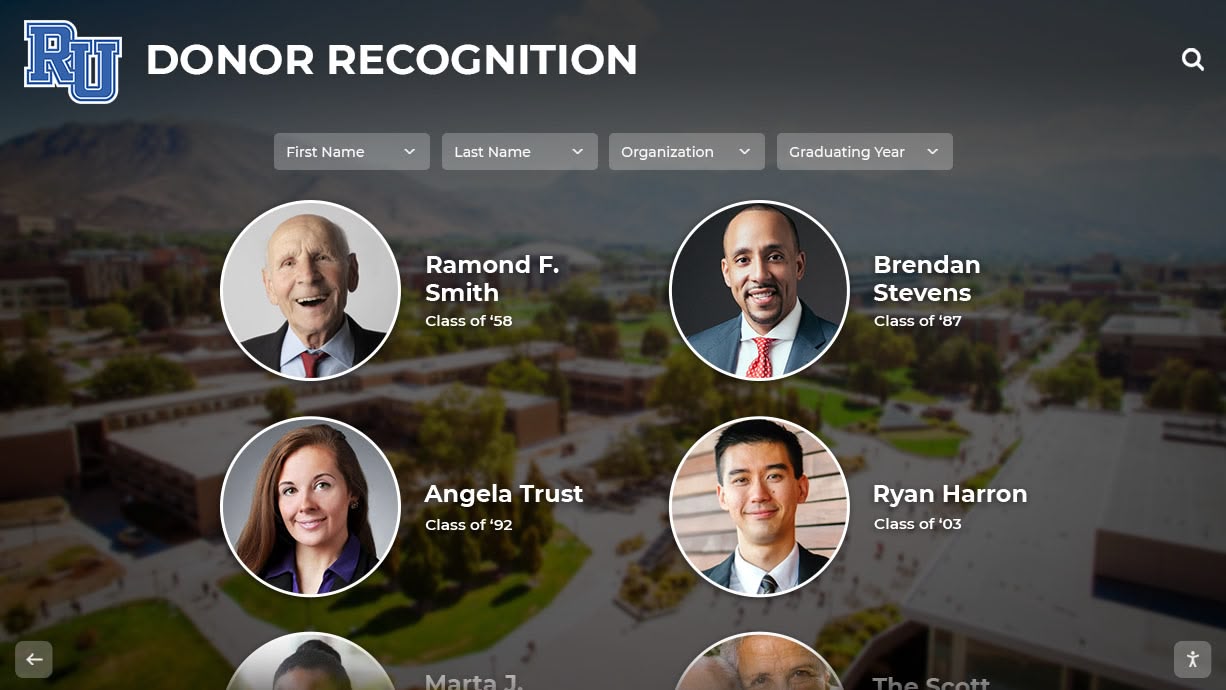Alumni recognition represents one of the most powerful yet underutilized strategies for strengthening institutional connections, inspiring current students, and building vibrant communities that span generations. When graduates see their accomplishments celebrated meaningfully, they develop deeper emotional bonds with their alma mater—bonds that translate into increased giving, active volunteerism, mentorship engagement, and enthusiastic advocacy.
Yet many institutions struggle to create recognition programs that extend beyond sporadic awards or outdated wall plaques. The most successful schools, universities, and organizations implement comprehensive recognition systems that celebrate diverse achievements, leverage modern technology, and create ongoing engagement opportunities throughout alumni lifetimes.
Whether you’re launching your first alumni recognition initiative, revitalizing an existing program, or exploring modern solutions that overcome traditional limitations, this guide provides actionable frameworks for creating recognition that delivers lasting value for both your institution and the alumni you celebrate.
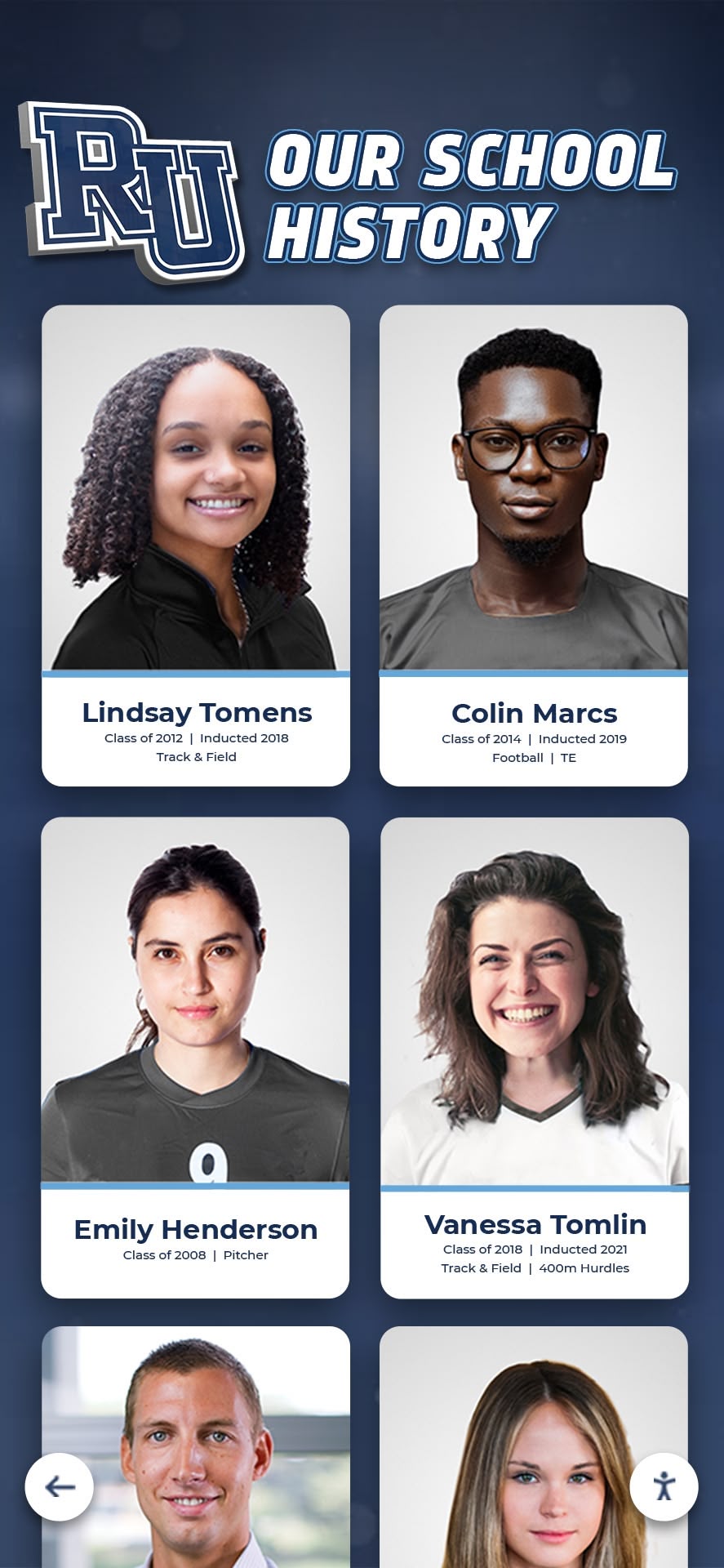
Understanding Alumni Recognition Programs
Alumni recognition programs encompass the systems, ceremonies, displays, and ongoing initiatives through which educational institutions and organizations honor graduates who have achieved distinction in their careers, made significant community contributions, demonstrated exceptional character, or brought honor to their alma mater through remarkable accomplishments.
Core Purposes of Alumni Recognition
Effective recognition programs accomplish multiple objectives simultaneously, creating value that extends across various institutional priorities and stakeholder groups.
Honoring Achievement and Service
Recognition provides tangible acknowledgment of alumni accomplishments, validating the significance of their contributions to professions, communities, and society. This public honor demonstrates institutional pride in graduates’ achievements while expressing gratitude for how they represent their alma mater. According to research from the Council for Advancement and Support of Education (CASE), alumni who receive formal recognition report 40% higher satisfaction with their educational experience compared to unrecognized peers.
Inspiring Current Students
When students see concrete examples of distinguished alumni who once walked the same hallways, sat in the same classrooms, and faced similar challenges, achievement becomes tangible and aspirational. Recognition programs create powerful role models that answer the question “What’s possible after graduation?” through compelling real-world examples across diverse fields and endeavors.
Understanding how schools recognize graduates reveals patterns that institutions can adapt to create comprehensive recognition spanning from commencement through entire alumni lifetimes.
Strengthening Alumni Connections
Recognition reinforces emotional bonds between graduates and their alma mater. When alumni see their achievements honored publicly, they feel valued as integral parts of ongoing institutional stories rather than forgotten names in old records. This strengthened connection often translates into increased engagement, volunteerism, and philanthropic support that compound over decades.
Preserving Institutional Legacy
Over time, collective memory fades and remarkable stories risk being lost. Alumni recognition programs document institutional history, preserving narratives of exceptional graduates for future generations. These programs become historical archives celebrating the evolution of alumni achievement across decades while maintaining connections between past excellence and future aspirations.
Supporting Development and Fundraising
While recognition should never feel transactional, thoughtfully designed programs naturally support fundraising efforts. Alumni giving participation rates average 8.5% nationally according to CASE data, but institutions with robust recognition programs report participation rates 25-40% higher. Research on major gift donor recognition demonstrates how celebrating generosity inspires additional philanthropic support while honoring existing contributors appropriately.
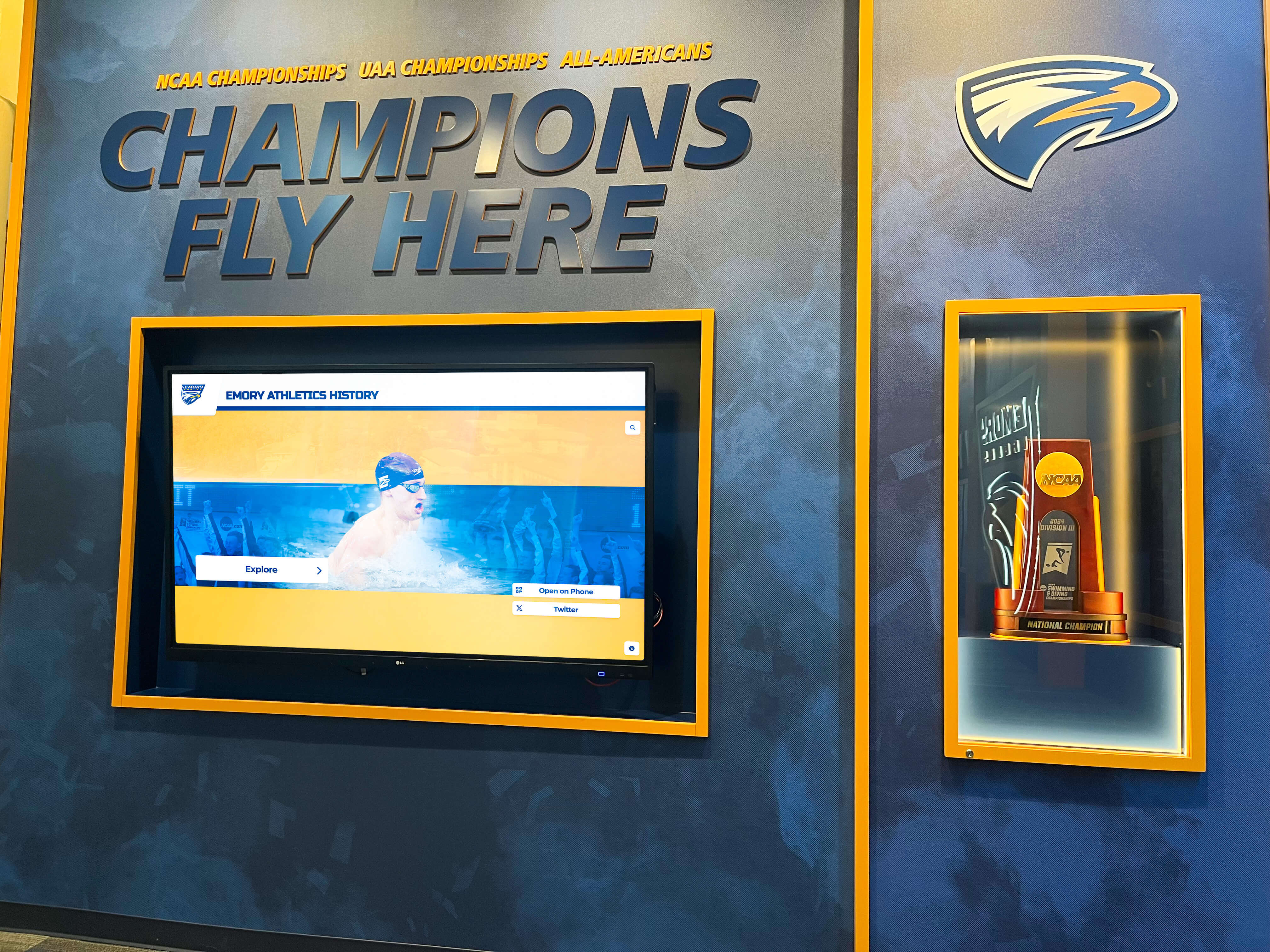
Types of Alumni Recognition Programs
Successful institutions implement multiple recognition tiers that honor diverse accomplishments while creating engagement opportunities across broad alumni populations.
Hall of Fame Inductions
Alumni halls of fame represent the highest institutional honor, recognizing graduates who have achieved extraordinary distinction in their careers, communities, or through service to their alma mater.
Selection Criteria and Process
Most institutions establish transparent criteria considering multiple achievement dimensions including professional excellence demonstrating sustained career success, community impact through civic contributions or philanthropic leadership, institutional support through volunteering or mentorship, and character demonstration embodying institutional values throughout careers and personal lives.
Nomination processes typically involve open submission periods accepting nominations from alumni, faculty, staff, and community members, followed by selection committee review evaluating candidates against published standards. Committees should include diverse representation from administration, faculty, alumni association leadership, and sometimes student voices.
High school alumni hall of fame displays provide excellent models for recognition systems applicable across educational levels, from secondary schools through universities.
Induction Ceremonies
Annual or biennial induction ceremonies create special events celebrating new honorees through formal programs introducing each inductee, biographical presentations sharing career journeys, acceptance speeches providing inspiration and advice, and reception opportunities for community engagement with honored alumni.
These ceremonies provide compelling reasons for alumni to return to campus while generating content for ongoing communications, social media engagement, and press coverage that extends recognition visibility well beyond attendees.
Distinguished Alumni Awards
Beyond hall of fame induction, many institutions maintain annual awards recognizing specific achievement categories, creating more opportunities to celebrate excellence while acknowledging diverse paths to distinction.
Common Award Categories
Career Achievement Awards
- Lifetime Achievement Award for sustained excellence
- Young Alumni Achievement (typically under 40)
- Professional Excellence in specific fields
- Entrepreneurship and Innovation Recognition
- Industry Leadership Awards
Service and Impact Awards
- Alumni Volunteer Service Award
- Community Impact Recognition
- Humanitarian Service Award
- Mentorship Excellence Award
- Institutional Support Award
Western Governors University, for example, selects distinguished graduates annually through a nomination process open until October 31, recognizing alumni for both professional achievements and community impact. The University of North Florida presents multiple award categories including Distinguished Alumni Achievement, Young Alumni Achievement, Alumni Service Award, and Alumni-Owned Business Service Award through an annual ceremony each November.
Special Recognition Categories
Many programs include awards for athletic achievement, arts and cultural contributions, academic and research excellence, military service distinction, and first-generation graduate accomplishments. This diversity ensures all alumni populations see themselves represented and feel that their particular paths to success receive appropriate celebration.
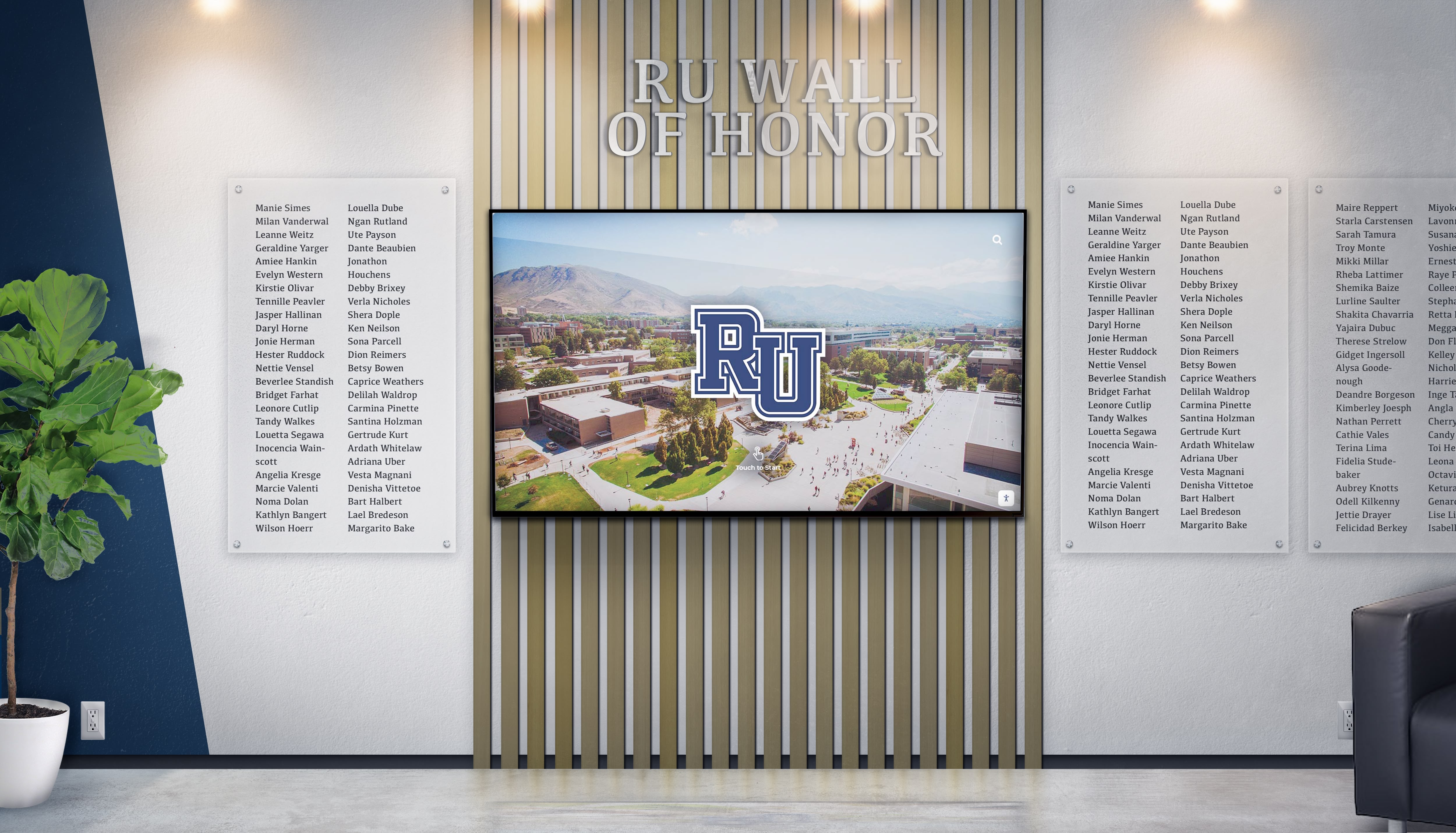
Recognition Displays and Physical Installations
Permanent displays ensure achievements remain visible year-round to current students, visitors, and community members, creating lasting testaments to graduate accomplishment while inspiring those who encounter them.
Traditional Recognition Approaches
Classic approaches to alumni recognition have served institutions well for generations, creating formal, permanent displays that command respect and attention.
Engraved plaques and nameplates mounted on dedicated walls provide timeless elegance and permanence. Each honoree receives individual recognition through names, graduation years, and brief achievement summaries. These displays create impressive visual impact, particularly when arranged in organized patterns that grow over time.
Photo display boards with accompanying biographical text offer more personal recognition than simple nameplates. Visitors connect more strongly when they can see inductees’ faces alongside achievement narratives, making the recognition feel more human and relatable.
Trophy cases and display cabinets work well for alumni with physical artifacts—awards, medals, documents, or memorabilia—creating engaging three-dimensional displays. These installations particularly suit athletic achievements, artistic accomplishments, or professional recognitions that include tangible elements.
Limitations of Traditional Displays
Traditional recognition faces significant challenges that modern technology addresses effectively. Space constraints eventually force difficult decisions about where to add new inductees or whether expensive renovations are necessary to expand displays. Updating information or correcting errors requires manufacturing and installing replacement plaques, an expensive and time-consuming process.
Perhaps most significantly, traditional displays limit the depth and richness of storytelling possible. A brass nameplate can list a name, year, and brief description—but cannot convey the full narrative of someone’s journey, capture their personality through video interviews, or allow visitors to explore connections among alumni working in fields that interest them.
Digital Alumni Recognition: Transforming What’s Possible
Modern digital recognition displays have revolutionized alumni recognition by addressing virtually every limitation of traditional approaches while introducing powerful new capabilities that were impossible just years ago.
Interactive Touchscreen Recognition Systems
Digital hall of fame systems combine unlimited capacity with rich multimedia storytelling and intuitive interactivity. A single touchscreen display occupying minimal wall space can showcase hundreds or thousands of graduates with detailed profiles impossible in traditional formats.
Core Advantages of Digital Recognition
Unlimited Recognition Capacity - Honor as many alumni as merit recognition without additional physical space. Whether recognizing 50 distinguished graduates or 5,000, the display footprint remains constant while accommodating growth indefinitely.
Rich Multimedia Profiles - Include professional photos, high school yearbook images for nostalgia, video interviews capturing personality and wisdom, career timeline visualizations, achievement galleries, and scanned documents or articles. This rich media creates emotional connections that text alone cannot achieve.
Instant Content Updates - Add new inductees or update existing profiles without physical modifications, manufacturing delays, or installation costs. Content management happens through intuitive web-based interfaces from any internet-connected device.
Interactive Exploration - Visitors can search by name, filter by graduation year, browse by achievement category or career field, discover connections among alumni, and share profiles via social media or email. This interactivity creates engagement impossible with static displays.
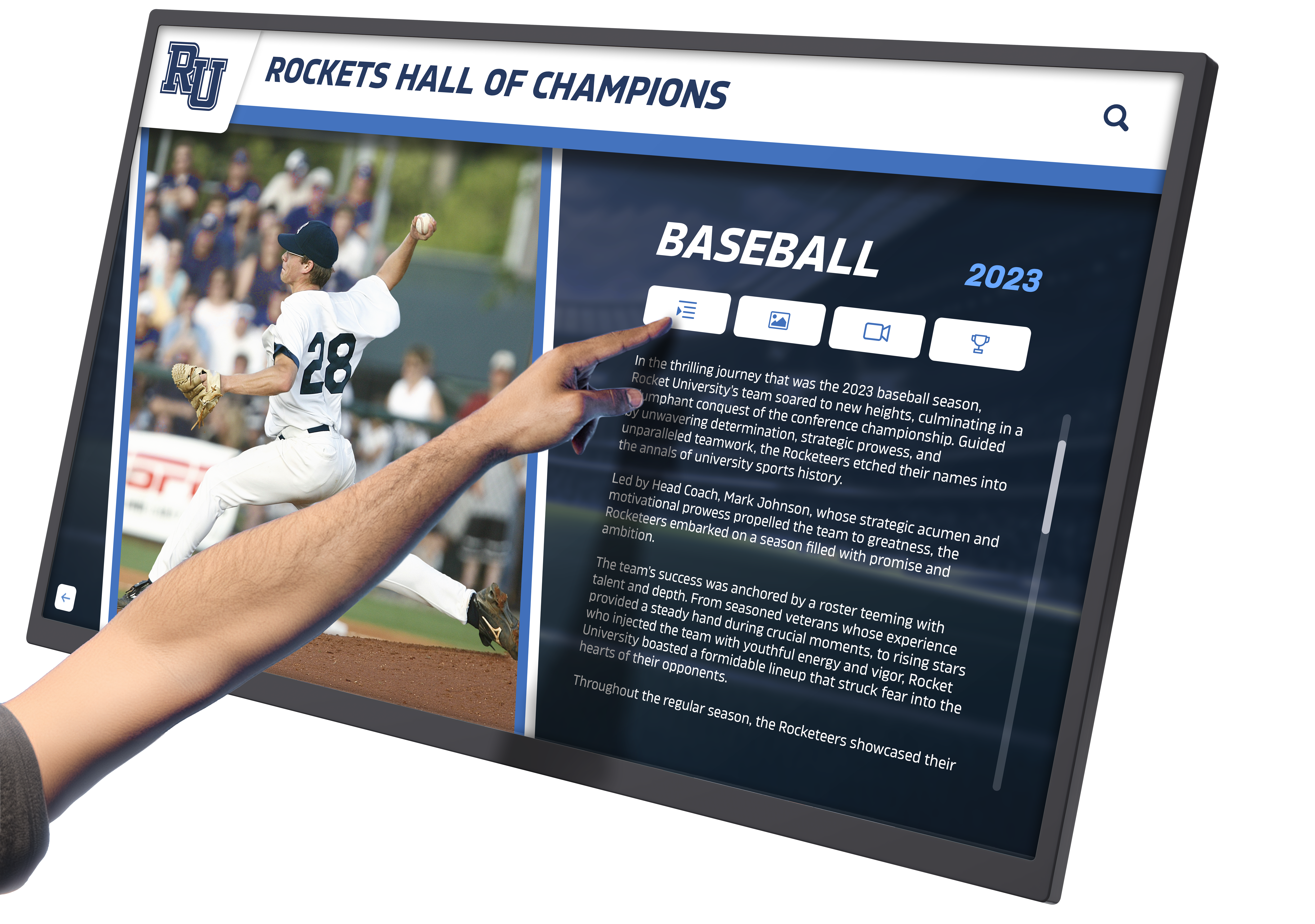
Cost-Effectiveness Long-Term - While digital systems require higher initial investment compared to a few traditional plaques, they become dramatically more economical over time. Traditional programs adding 10-15 inductees annually might spend $3,000-$5,000 per year indefinitely on new plaques. Digital systems accommodate unlimited additions without per-inductee costs beyond staff time for content creation.
Analytics and Insights - Modern systems track engagement metrics including daily interactions, most-viewed profiles, popular search terms, average session duration, and peak usage times. These analytics help institutions understand what resonates with visitors while demonstrating program impact through concrete data.
Web-Based Recognition Platforms
Online recognition platforms extend celebration globally, allowing alumni anywhere in the world to explore achievements, reconnect with classmates, and share accomplishments with their professional and social networks.
Web platforms integrate seamlessly with social media, allowing one-click sharing that exponentially extends recognition reach. When alumni share their profiles or classmates’ achievements with their networks, institutional visibility expands dramatically while facilitating reconnection among graduates who’ve lost touch over the years.
These platforms also support alumni engagement strategies by providing searchable directories, mentorship matching, career networking, and communication tools that transform recognition displays from passive viewing experiences into active community-building platforms.
Hybrid Recognition Approaches
Many institutions find that combining traditional and digital elements creates the most effective recognition experience. A hybrid approach might include a traditional engraved wall listing all hall of fame inductees, complemented by a nearby interactive digital display offering detailed profiles, multimedia content, and searchable databases.
This combination preserves the gravitas and permanence that traditional displays provide while adding the engagement, flexibility, and storytelling capabilities that digital technology enables. Transitioning from trophy cases to digital displays allows institutions to honor existing recognition investments while expanding capacity for future growth.
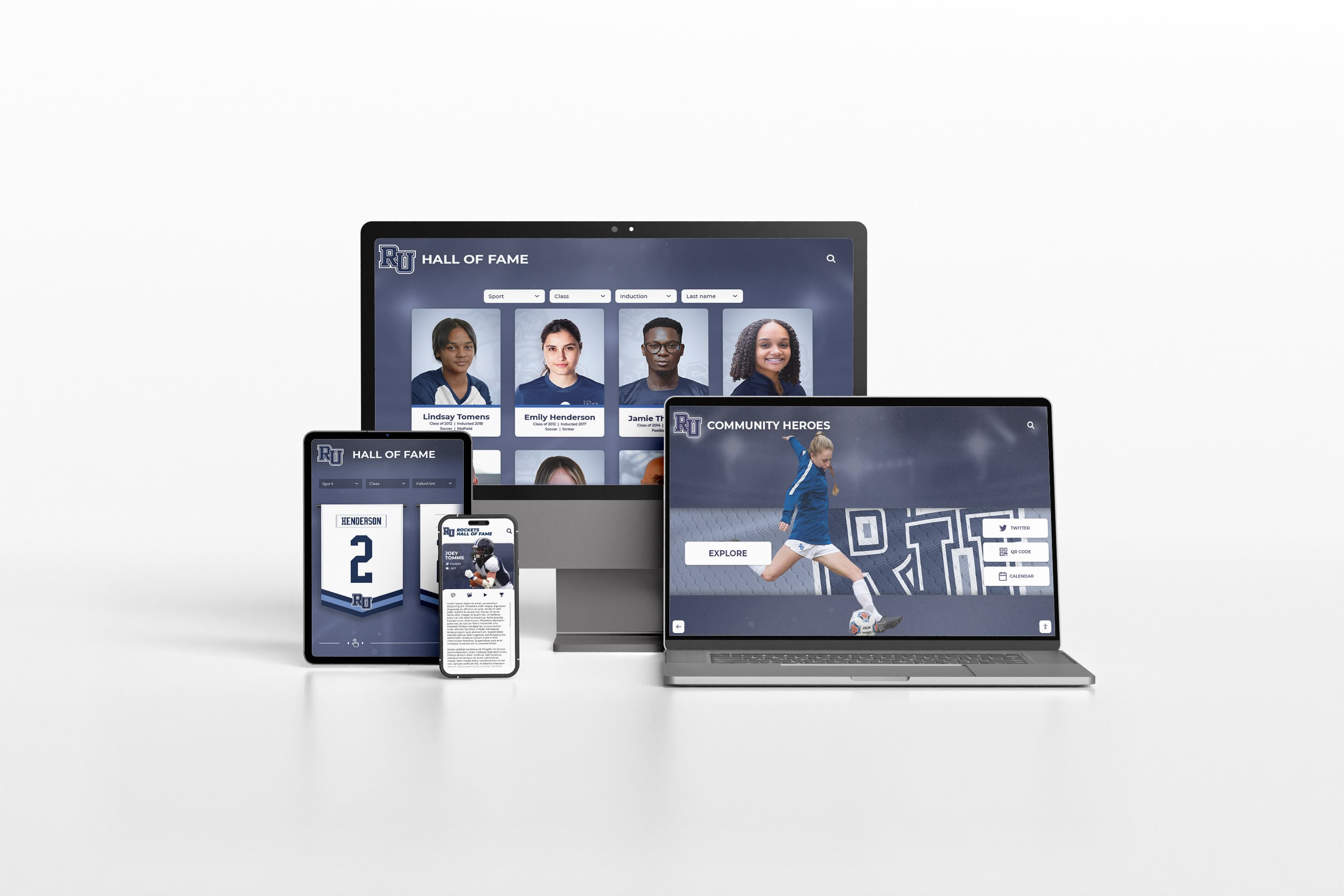
Planning Your Alumni Recognition Program
Successful recognition programs begin with thorough planning that addresses both immediate implementation needs and long-term sustainability.
Establishing Clear Selection Criteria
Transparent, well-defined criteria ensure recognition program credibility and fairness while preventing perceptions of favoritism or arbitrary decisions.
Professional Excellence Criteria
Career accomplishment demonstrating exceptional success might include leadership positions in major organizations, industry recognition through awards or publications, entrepreneurial achievement building successful ventures, professional innovation advancing fields significantly, or sustained excellence earning widespread peer respect.
Community Impact Dimensions
Significant civic contributions through volunteer leadership, philanthropic support benefiting communities or causes, public service in elected or appointed positions, advocacy for important social issues, or initiatives that meaningfully improved communities locally or globally all represent recognition-worthy accomplishments.
Institutional Support Considerations
Ongoing engagement with alma mater through mentorship programs connecting graduates with students, financial contributions supporting institutional mission, speaking engagements sharing wisdom and experience, advisory service providing expertise and guidance, or other activities strengthening institutional effectiveness and student success demonstrate valued commitment.
Character and Values Assessment
Demonstration of integrity, ethical leadership, and embodiment of institutional values throughout career and personal life ensures recognition honors not just achievement, but how achievement was pursued and what values guided decisions along the way.
Eligibility Requirements
Common requirements include minimum time periods since graduation (typically 3-10 years for regular recognition, 5-15 years for young alumni awards), documented evidence verifying achievements, and for living honorees, willingness to participate in recognition events and content development when possible.
Defining Nomination and Selection Processes
Structured processes maintain program credibility while ensuring consistent, defensible decisions that withstand scrutiny and build community confidence.
Nomination Procedures
Establish annual cycles with clearly communicated nomination windows. Allow nominations from multiple sources—alumni themselves, current staff and faculty, fellow graduates, community members familiar with candidates’ accomplishments, or family members for deceased alumni.
Create nomination forms requesting comprehensive information including detailed biographical data, specific achievement descriptions with supporting evidence, reference contacts who can verify accomplishments, and narrative statements explaining why nominees merit recognition according to established criteria.
Selection Committee Structure
Form diverse committees including administrative representation ensuring alignment with institutional priorities, faculty members providing academic perspective, alumni association leaders representing graduate communities, community members offering external viewpoints, and potentially student representation providing emerging generation perspectives.
Implement staggered terms ensuring continuity through overlapping membership while refreshing perspectives regularly. Committee diversity across generations, professions, and demographics helps ensure recognition reflects broad definitions of achievement rather than narrow preferences.
Evaluation and Decision Process
Implement structured review processes where committee members evaluate nominations independently against established criteria, discuss candidates’ merits in scheduled meetings, vote on final selections using clear procedures, and document decision rationales maintaining institutional memory while supporting transparency if questions arise.
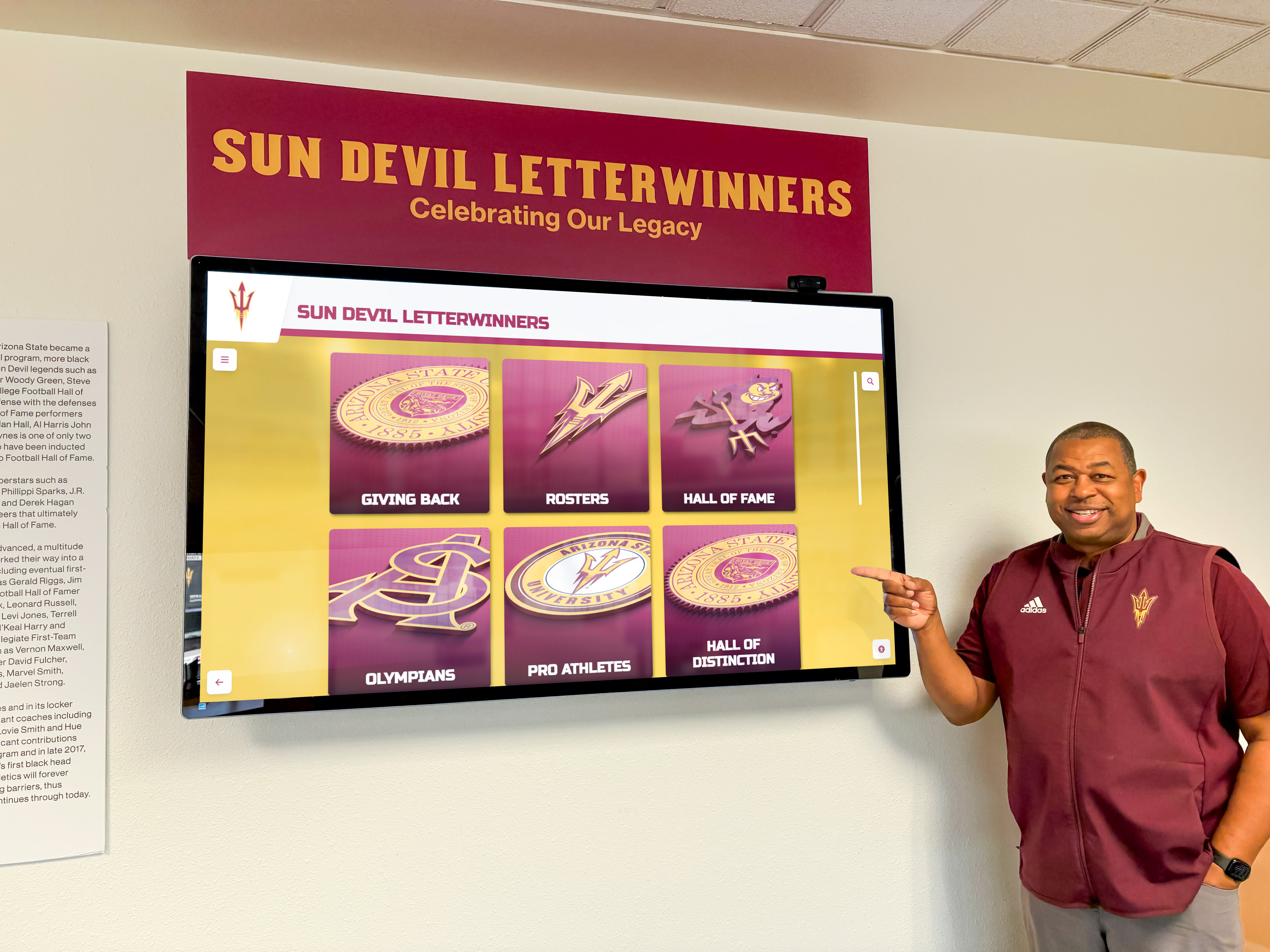
Budgeting for Implementation and Sustainability
Realistic financial planning prevents underinvestment that undermines impact or budget overruns that threaten program sustainability and future institutional support.
Initial Implementation Costs
For traditional approaches, expect $5,000-$30,000 depending on materials quality, customization level, number of inaugural inductees, and installation complexity. Digital interactive displays typically require $15,000-$50,000 for initial setup including commercial-grade hardware, software platforms, professional installation, network integration, and initial content development.
Ongoing Operating Expenses
Budget for annual content updates and additions, software subscriptions for digital systems, maintenance and cleaning of physical elements, periodic technology refreshes (typically 5-7 years for digital hardware), and staff time for program management, coordination, and promotion.
Funding Strategies
Many institutions fund recognition programs through alumni association budgets, dedicated fundraising campaigns positioning the recognition program itself as a worthy investment, corporate sponsorships from businesses with alumni connections, individual donor contributions particularly from those who might eventually be recognized, or collaborative funding across multiple departments (development, athletics, academic affairs) sharing display benefits.
Consider framing the recognition wall itself as a fundraising opportunity—many alumni willingly support programs that honor achievement and strengthen community, particularly when recognition includes donor acknowledgment features.
Creating Engaging Recognition Content
Whether traditional or digital, content quality determines whether recognition truly inspires and engages or merely lists names that visitors glance past without real connection.
Compelling Alumni Profiles
Effective profiles tell stories rather than simply listing facts, creating narratives that help visitors understand journeys from student to distinguished graduate.
Essential Profile Elements
Professional headshots or recent career photos provide current identity, while high school or college yearbook photos create nostalgia and connection to institutional identity. For digital systems, 2-5 minute video interviews where alumni share advice, reflections on educational experiences, and career insights create powerful emotional resonance.
Biographical narratives (300-500 words for digital, 50-100 for traditional) should use active voice and specific details rather than generic praise. Include graduation information and honors, student involvement and activities, educational path including advanced degrees, career progression highlighting major milestones, notable awards and recognition received, community service and leadership, and personal advice or memorable experiences that current students can learn from.
Content Quality Standards
Maintain consistency through photography guidelines specifying resolution, format, and style, writing style guides ensuring consistent tone and structure, fact-checking procedures verifying accuracy before publication, review workflows requiring approval from appropriate stakeholders, and regular update schedules keeping information current as alumni achieve new milestones.
Content management for digital recognition ensures programs remain fresh and engaging over time rather than becoming outdated displays that visitors learn to ignore.
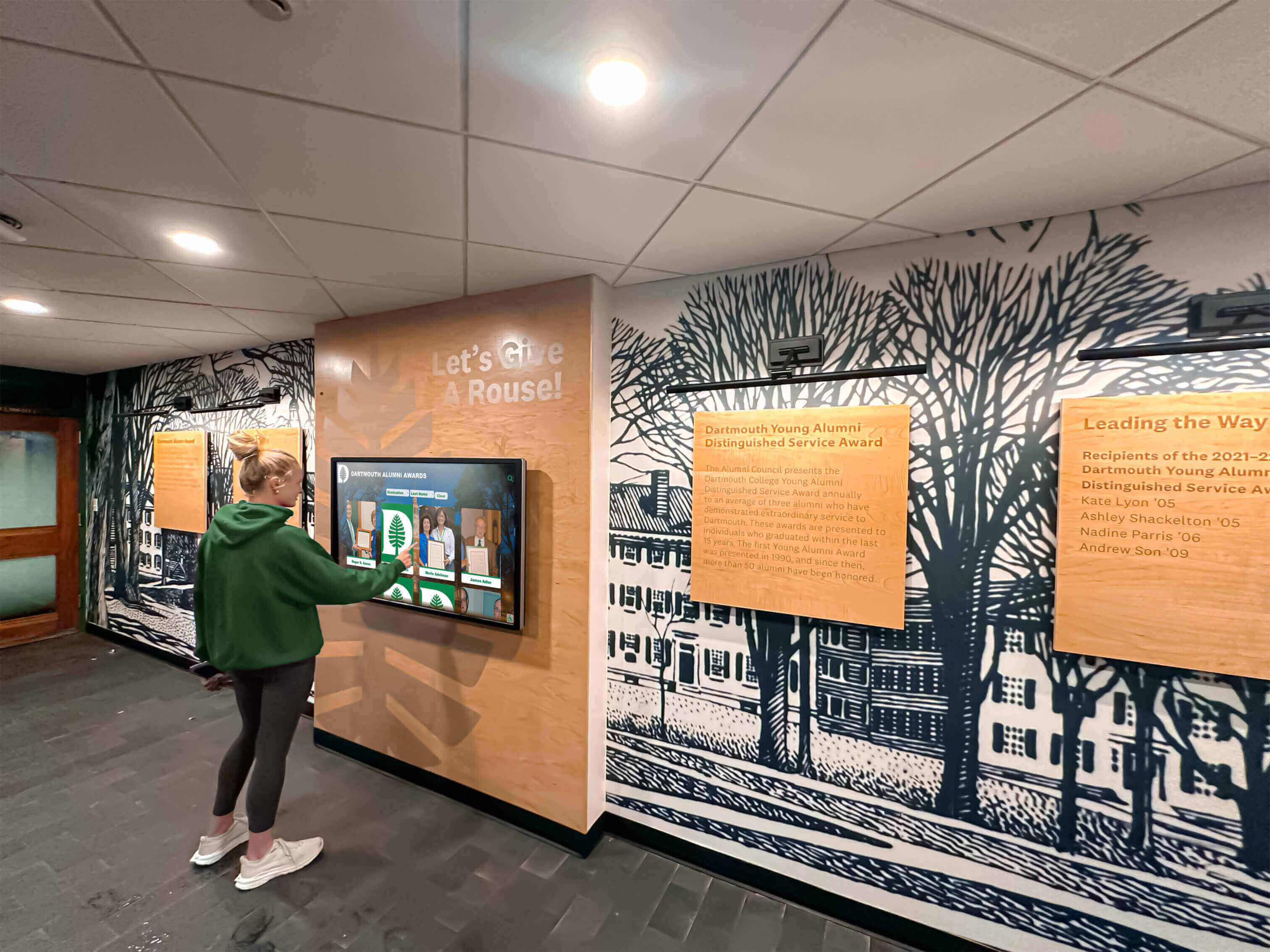
Gathering Alumni Information
Primary Information Sources
Nomination forms should request comprehensive biographical details, achievement documentation, and supporting materials. Direct alumni outreach through surveys or interviews provides personal reflections and advice. Public records including professional bios, LinkedIn profiles, press articles, and published works offer verified information about careers and accomplishments.
School archives containing yearbooks, student newspapers, athletic records, and academic honors provide historical context. Alumni networks can connect you with classmates who provide insights and stories. For deceased or hard-to-reach alumni, family contacts often possess photographs, documents, and personal stories worth preserving.
Multimedia Development
For digital recognition systems, professional video interviews create engaging content that brings alumni to life. Photo galleries should include career imagery, awards and honors, historical school photos, and personal milestones. Scanned documents like newspaper articles, certificates, research publications, or letters of recommendation provide authentic historical artifacts that enrich narratives.
When conducting video interviews, prepare open-ended questions about educational experiences that shaped careers, challenges overcome on paths to success, advice for current students pursuing similar fields, reflections on how institutions contributed to achievements, and memorable moments from student days that remain meaningful decades later.
Implementing Modern Recognition Technology
Solutions like Rocket Alumni Solutions provide comprehensive platforms combining intuitive management with powerful engagement features, enabling institutions to maintain current, accessible recognition reaching graduates globally while inspiring current students through visible achievement examples.
Key Technology Features
Intuitive Search and Discovery
Robust search capabilities include name search with auto-complete, graduation year filtering, achievement category browsing, career field exploration, keyword search across all content, and geographic location filtering. Visual navigation options like timeline views showing inductees by decade, grid views displaying all alumni photos, featured alumni carousels highlighting special honorees, and random discovery features enabling serendipitous exploration all enhance engagement.
Social Integration and Sharing
One-touch sharing to Facebook, Twitter, LinkedIn extends recognition reach exponentially as alumni share profiles with professional and personal networks. QR codes linking to extended online profiles, email sharing capabilities, and direct links to professional websites or portfolios create seamless connections between physical displays and digital engagement.
Analytics and Reporting
Track daily interactions, most-viewed profiles, popular search terms, average session duration, peak usage times, and user flow patterns. These insights help institutions understand what resonates with visitors, identify highly engaged alumni populations, demonstrate program value through concrete metrics, and optimize content and features based on actual behavior rather than assumptions.
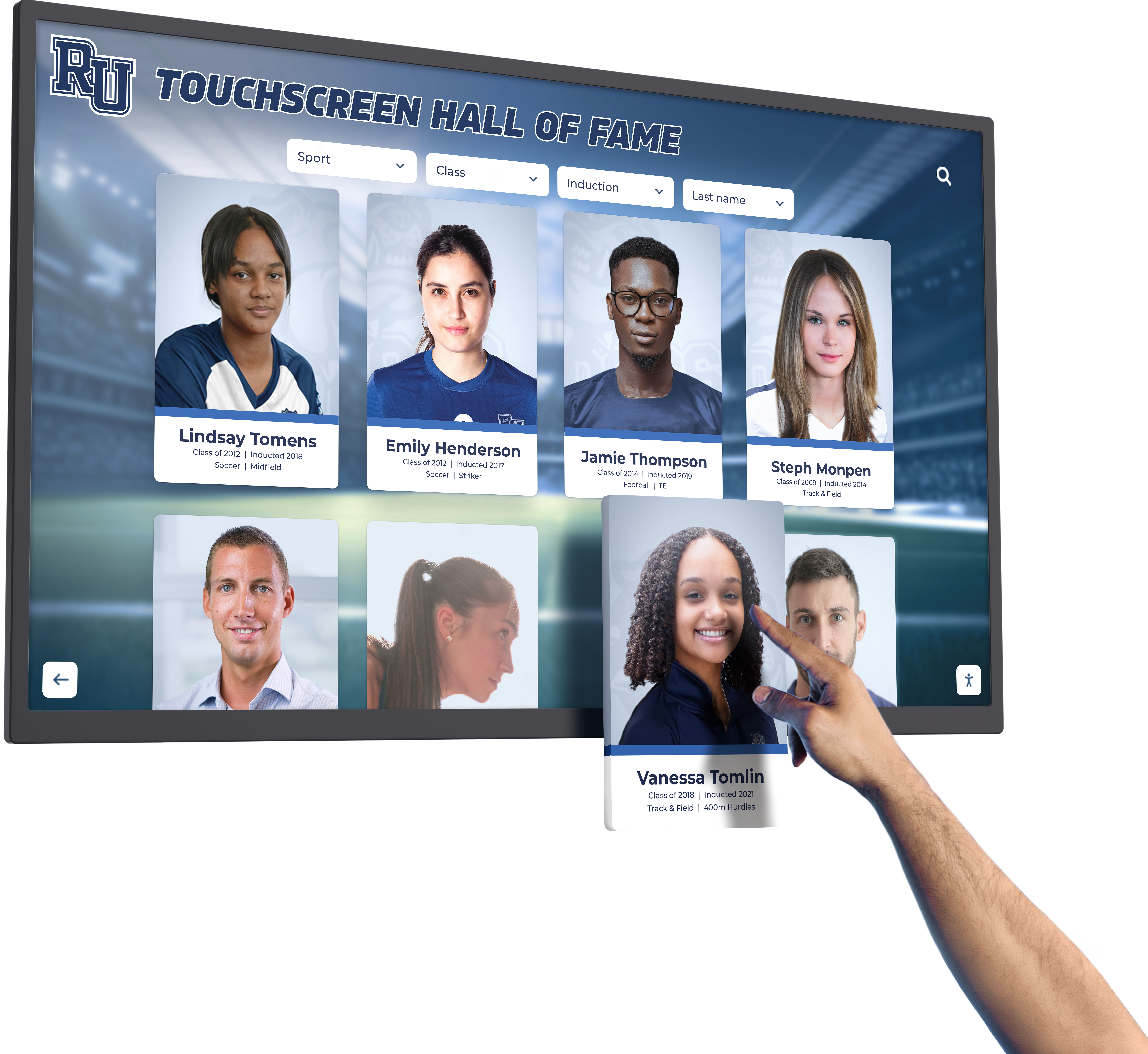
Implementation Process and Timeline
Phase 1: Assessment and Planning (4-8 weeks)
Define recognition program objectives and scope, select physical location considering visibility and traffic patterns, establish budget and secure funding commitments, choose technology partner evaluating capabilities and support, and develop selection criteria and nomination procedures.
Phase 2: Content Development (8-16 weeks)
Identify inaugural inductee class ensuring diversity and representation, gather biographical information through research and outreach, conduct video interviews and collect photography, write engaging profiles maintaining consistent quality, and develop multimedia content enriching narratives.
Phase 3: Installation and Configuration (3-4 weeks)
Complete hardware installation with professional mounting and finishing, configure software including branding and customization, import and organize content ensuring quality presentation, conduct thorough testing of all functionality, and train staff on content management and system operation.
Phase 4: Launch and Promotion (2-4 weeks)
Conduct soft launch allowing testing with limited audiences, gather initial feedback and make refinements, plan induction ceremony or unveiling event, develop communications strategy including press releases and social media, and create promotional materials for ongoing visibility.
Most institutions complete full implementation within 4-6 months from initial planning through formal launch, with digital systems requiring similar timeframes as traditional installations once committee processes conclude.
Maintaining Long-Term Program Success
Recognition programs require sustained attention to maintain impact and relevance over time, ensuring they continue delivering value rather than becoming stale exhibits visitors ignore.
Annual Addition Cycles
Establish predictable rhythms for adding new honorees through annual induction ceremonies, regular nomination periods opening at consistent times each year, scheduled display updates, and consistent communication creating anticipation. Regular cycles create traditions while ensuring recognition remains current rather than frozen in time.
For digital platforms, updates happen instantly through software. Traditional displays require advance planning to accommodate new plaques or photos, potentially necessitating periodic redesigns to create space for continued growth.
Content Refreshment Strategies
Beyond adding new inductees, maintain engagement through profile enhancements adding newly discovered information or photos, featured alumni rotations highlighting different honorees monthly or quarterly, achievement updates as alumni reach new career milestones, themed collections around special topics or historical anniversaries, and multimedia additions like new video interviews enriching existing profiles.
Active content management signals that recognition remains vibrant and current, encouraging repeat visits from community members who discover new content each time they engage with displays.
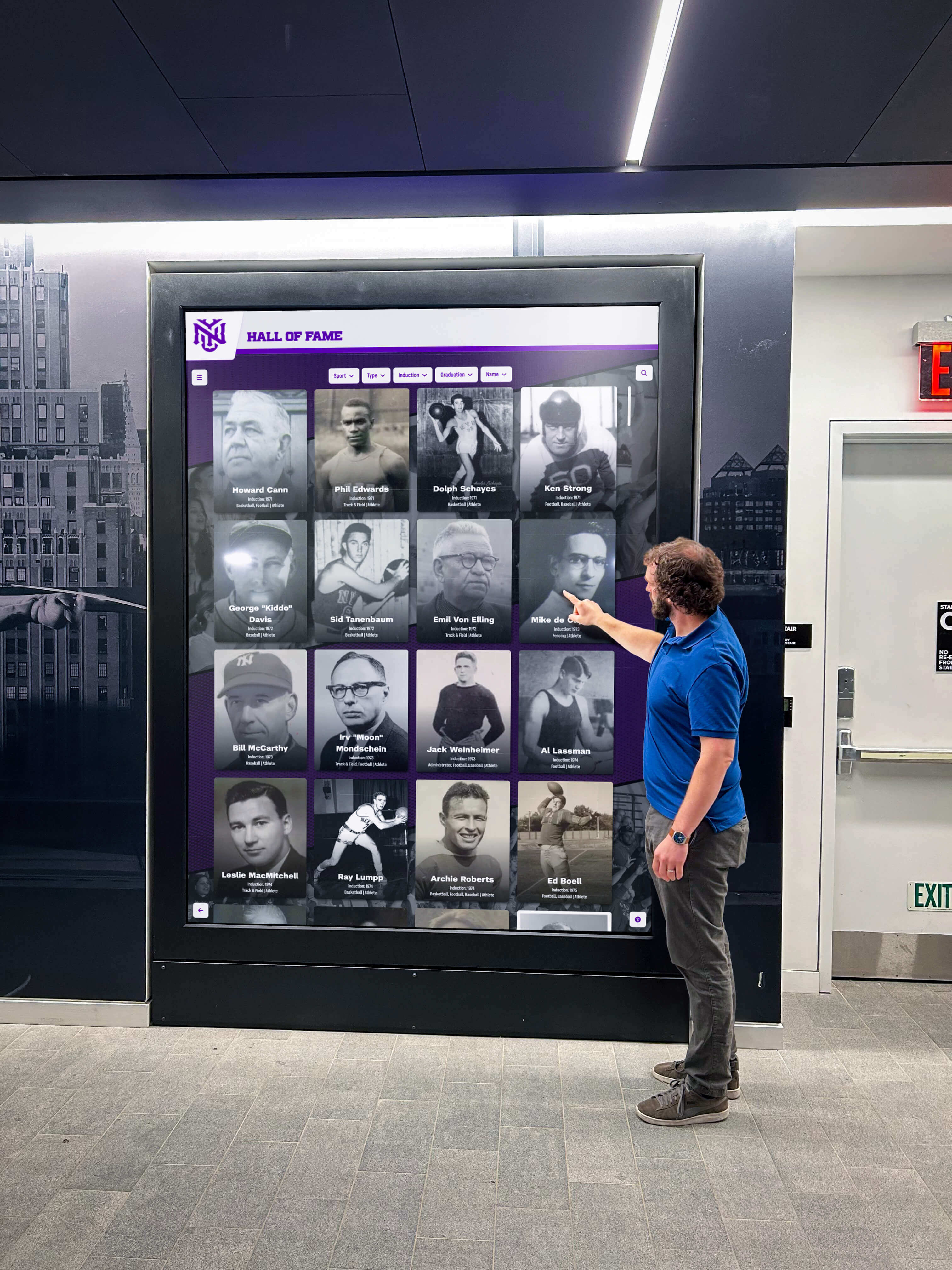
Measuring Success and Impact
Track meaningful metrics demonstrating program value including alumni engagement levels through giving rates, volunteer participation, and event attendance; student responses through surveys about inspiration impact and career exploration behaviors; visitor interaction data for digital systems with analytics; media coverage and social media reach; and nomination quality and quantity trends indicating community investment.
Use these metrics to report program value to leadership, identify content performing particularly well, adjust strategies based on actual behavior, and demonstrate return on investment justifying continued support and potential expansion.
According to institutions implementing comprehensive recognition programs, alumni giving participation typically increases 15-30% within 3-5 years of launching robust recognition systems, while volunteer engagement and mentorship program participation show similar growth trajectories.
Technical Maintenance for Digital Systems
Establish protocols ensuring regular screen cleaning weekly or as needed, periodic software updates typically handled automatically, hardware inspections and preventive maintenance quarterly, content backups and disaster recovery procedures, and technical support access for troubleshooting.
Most digital recognition systems prove highly reliable with minimal intervention required when using commercial-grade hardware and proven software platforms, but proactive maintenance prevents small issues from becoming significant problems.
Real-World Applications Across Different Institutions
Alumni recognition programs serve diverse educational and organizational contexts, each with specific needs and approaches that effective programs address appropriately.
High Schools
High school recognition programs celebrate graduates who have achieved distinction in careers, community service, arts, athletics, or character demonstration. These displays inspire current students by showing achievable pathways from high school through remarkable accomplishments in relatable timeframes.
High schools often emphasize recent graduates and local achievers whose proximity creates stronger student connections. Recognition programs may include special categories for young alumni achievement (typically 10-15 years post-graduation), ensuring current students see success examples from graduates they might remember or relate to more directly than historical honorees from decades past.
Understanding student achievement recognition helps high schools create comprehensive programs spanning current recognition through alumni celebration years later.
Colleges and Universities
Universities typically maintain more extensive recognition programs given larger alumni populations, broader geographic distribution, and more diverse achievement categories. Some institutions create specialized recognition for different colleges or schools within universities, acknowledging that engineering alumni may achieve distinction differently than education or arts graduates.
Digital systems become particularly valuable at college and university scale, where hundreds or thousands of distinguished alumni merit recognition—numbers that would be impossible to accommodate through traditional physical displays alone given space and cost constraints.
College athletics halls of fame often exist separately from general alumni recognition, celebrating competitive excellence while broader programs honor academic, professional, and community achievements.
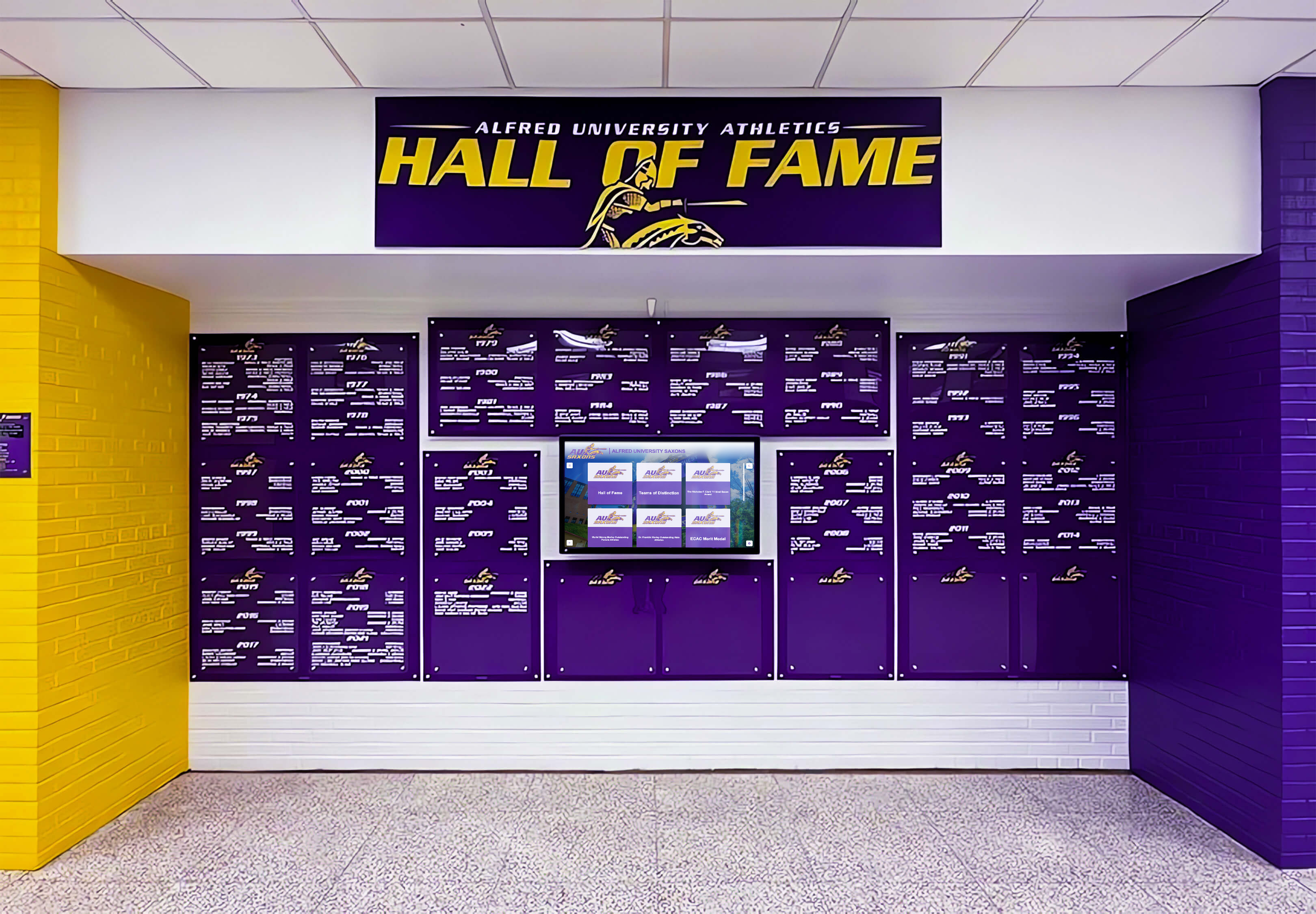
Alumni Associations
Independent alumni associations sometimes create recognition programs separate from institutional displays, particularly when schools lack formal programs or when associations seek initiatives strengthening their member value propositions.
Association-sponsored recognition may travel to regional alumni events, appear at reunions, or exist primarily online through web-based platforms accessible globally to geographically dispersed alumni populations.
Professional and Trade Schools
Specialized institutions—medical schools, law schools, business schools, military academies—often maintain professional-focused recognition celebrating career achievement within specific fields. These displays demonstrate institutional impact within industries while creating networking opportunities connecting current students with established professionals who can provide mentorship and career guidance.
Recognition criteria in professional schools typically emphasize field-specific achievements like medical innovations, legal precedents, business leadership, or military service distinction, acknowledging that graduates pursue more focused career paths than liberal arts institutions.
Integrating Recognition with Broader Alumni Engagement
The most successful institutions coordinate recognition programs with comprehensive engagement strategies creating ecosystems where different elements reinforce each other.
Recognition Supporting Fundraising
Recognition programs naturally support development efforts when thoughtfully designed. Donor recognition features celebrate generosity without creating transactional feelings, major gift donor spotlights model philanthropic leadership inspiring similar commitments, planned giving society member visibility honors legacy commitments, and multi-generational giving family celebrations acknowledge sustained family dedication.
Strategic approaches to donor recognition demonstrate how celebrating generosity enhances both gratitude expression and cultivation for future support, creating virtuous cycles where recognition inspires giving which merits recognition.
Events Driving Digital Engagement
Physical gatherings generate digital engagement momentum through event promotion on social platforms, live streaming or hybrid attendance options extending reach, post-event photo galleries and video recaps creating lasting content, networking follow-up suggestions facilitated through digital platforms, and content creation featuring event speakers or highlighted honorees.
This integration extends event value beyond attendees while creating continued engagement touchpoints throughout the year rather than limiting interaction to isolated occasions.
Volunteers as Engagement Multipliers
Active alumni volunteers often recruit peers and multiply engagement reach beyond what institutional staff can accomplish alone. Volunteers serve as event hosts bringing their networks, peer fundraising solicitors reaching classmates more effectively than institutional asks, mentorship program participants connecting with students, social media ambassadors sharing content authentically, and program advisory committee members providing community perspectives guiding program evolution.
Peer-to-peer engagement proves more effective than institutional outreach for many alumni populations who respond better to classmate invitations than official communications from institutions they graduated from decades ago.
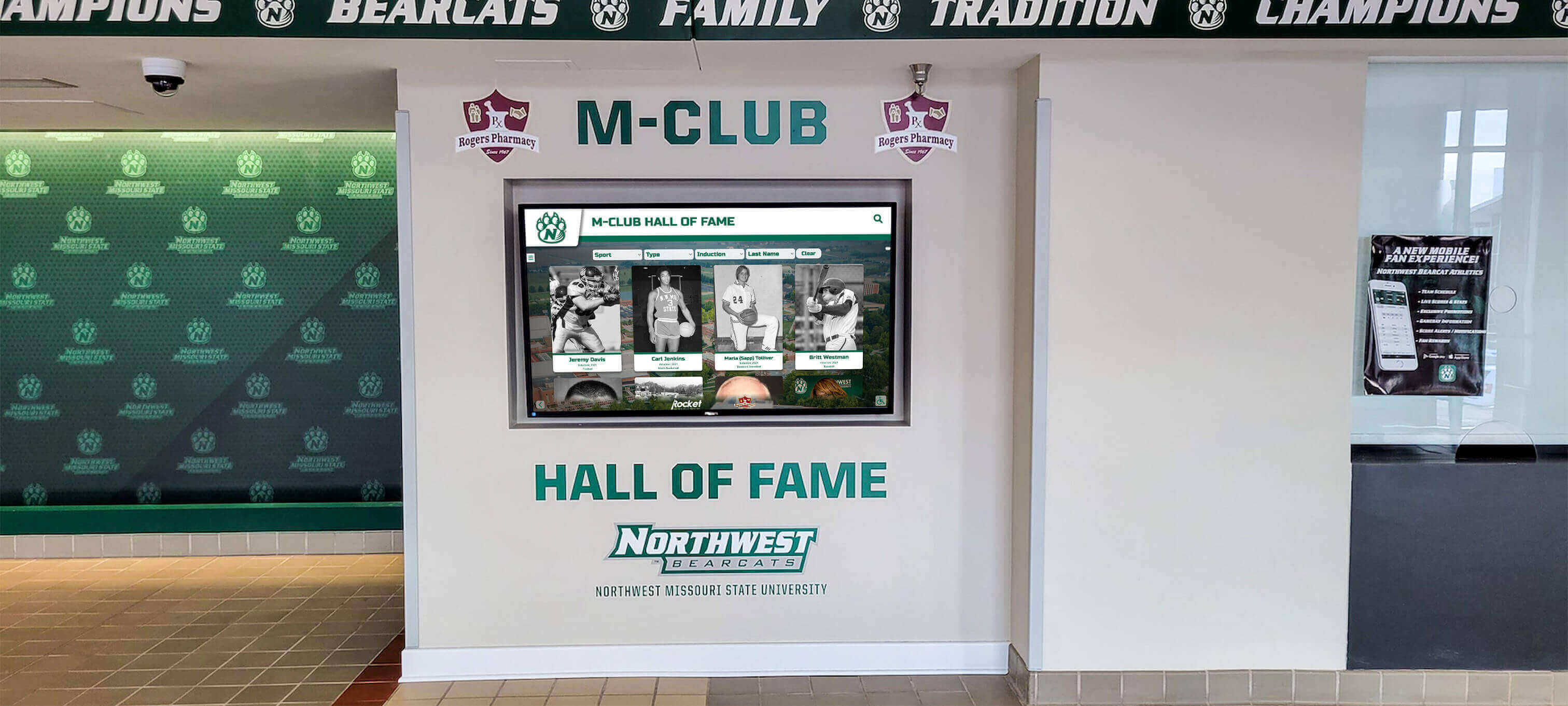
Addressing Common Implementation Challenges
Limited Budget Concerns
Schools with constrained budgets can implement meaningful recognition through phased approaches starting smaller and expanding over time, digital solutions that scale affordably as programs grow, fundraising positioning the recognition program itself as worthy of alumni and corporate investment, and volunteer committees reducing staff requirements through distributed workload.
Space Constraints
Digital recognition systems provide particularly compelling solutions for space-limited institutions. A single touchscreen occupying 10-15 square feet of wall space can showcase unlimited alumni with rich multimedia profiles, while traditional approaches require growing wall space as programs expand over years and decades.
Technical Support Concerns
Most modern recognition platforms provide comprehensive support including remote monitoring and diagnostics, responsive technical assistance via phone and email, automatic software updates maintaining security and functionality, detailed documentation and training resources, and warranty coverage for hardware components.
Institutions should select partners offering ongoing support rather than one-time installations, ensuring recognition systems remain functional and current throughout their operational lifetimes.
Selection Committee Challenges
Establish clear policies addressing conflict of interest when committee members have relationships with nominees, confidentiality requirements protecting nominee information during evaluation, term limits preventing committee stagnation, decision documentation supporting transparency and institutional memory, and appeals processes for handling community concerns about decisions.
Future Trends in Alumni Recognition
Recognition technology and practices continue evolving, bringing new capabilities that will transform programs in coming years.
Artificial Intelligence and Personalization
Emerging systems use AI to recommend content based on visitor interests, suggesting alumni working in fields related to previous searches or from graduation years visitors explored. This personalization creates more relevant experiences encouraging deeper engagement while helping visitors discover alumni connections they might otherwise miss.
Virtual and Augmented Reality
Immersive technologies create novel recognition experiences including virtual campus tours featuring alumni achievements in specific locations where they studied or competed, augmented reality overlays adding digital content to physical spaces through smartphone cameras, or VR attendance at induction ceremonies from anywhere globally allowing distant alumni to participate meaningfully.
Blockchain Credentials
Some institutions explore blockchain-verified recognition creating permanent, portable, verifiable records of honors that alumni can share across professional platforms with confidence in authenticity. These digital credentials complement traditional recognition while providing functionality valuable in increasingly digital professional environments.
Mobile Integration
Companion mobile apps extend recognition beyond fixed displays, providing searchable alumni directories accessible anywhere, event integration featuring relevant recognition during gatherings, notification systems alerting when new honorees from users’ eras are added, and offline access allowing content viewing without internet connectivity.
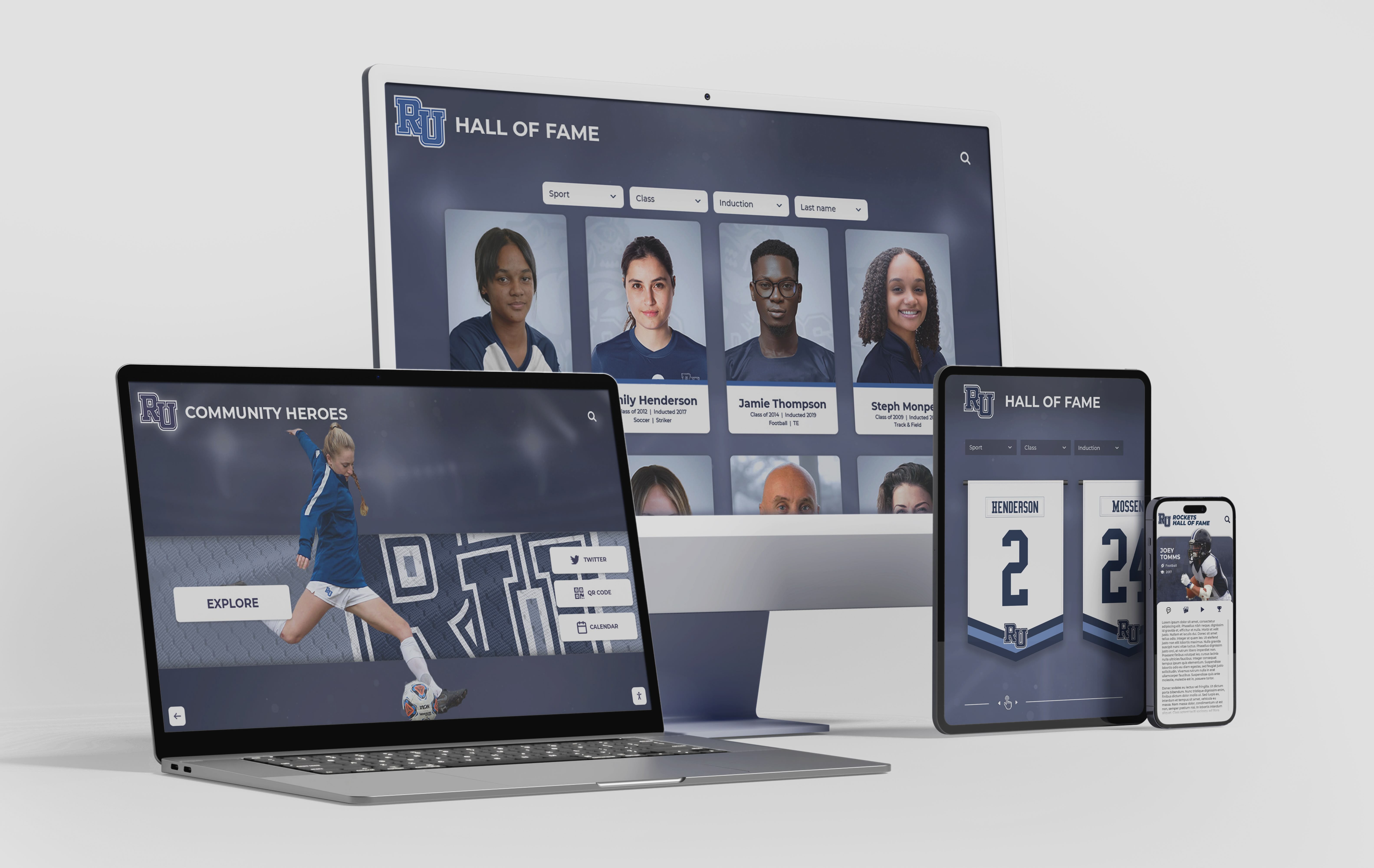
Conclusion: Creating Recognition That Inspires
Alumni recognition programs represent powerful investments in institutional culture, student inspiration, and community connection that deliver returns far exceeding implementation costs when thoughtfully designed and consistently maintained.
The most successful approaches balance tradition with innovation, establishing clear criteria and transparent processes while leveraging technology to expand what’s possible in storytelling and engagement. Whether implementing traditional plaques, cutting-edge digital displays, or hybrid approaches combining both elements, fundamental principles remain constant: meaningful recognition that celebrates achievement, preserves legacy, and inspires future excellence.
Educational institutions and organizations ready to honor distinguished alumni have more options than ever before. Solutions like Rocket Alumni Solutions provide comprehensive platforms combining intuitive technology, professional support, and proven best practices—making it easier than ever to create recognition programs that deliver lasting value for decades to come.
Keys to Successful Recognition Programs
- Establish clear, transparent selection criteria
- Celebrate diverse definitions of achievement
- Leverage technology overcoming traditional limitations
- Create rich multimedia storytelling
- Integrate recognition with broader engagement
- Measure impact and optimize continuously
- Maintain consistent communication and promotion
- Balance tradition with innovation
Common Recognition Pitfalls to Avoid
- Narrow criteria excluding deserving alumni
- Outdated displays becoming stale and ignored
- Lack of diversity in honored achievements
- Insufficient promotion and visibility
- Transactional feelings undermining authenticity
- Inconsistent processes creating fairness concerns
- Technology without ongoing support
- Recognition without broader engagement integration
Ready to explore options for your alumni recognition program? Whether starting from scratch, modernizing existing displays, or expanding recognition capacity, comprehensive digital platforms designed specifically for educational institutions offer powerful capabilities for celebrating distinguished graduates while strengthening the bonds connecting past, present, and future members of your community.
Your graduates’ achievements deserve celebration equal to their effort and accomplishment. Thoughtful recognition investments yield returns through strengthened relationships, enhanced giving, increased volunteerism, and elevated institutional reputation that compound across generations.
